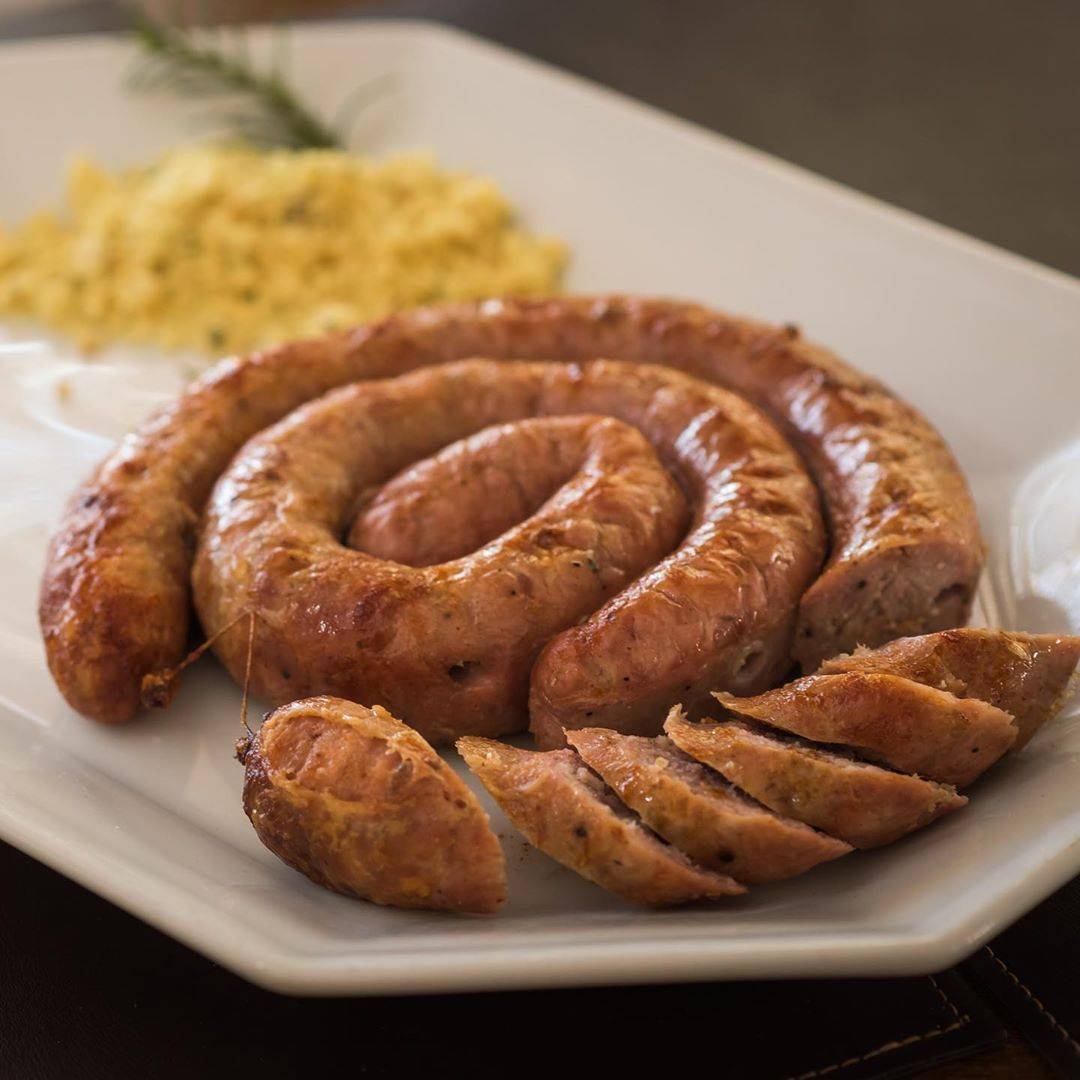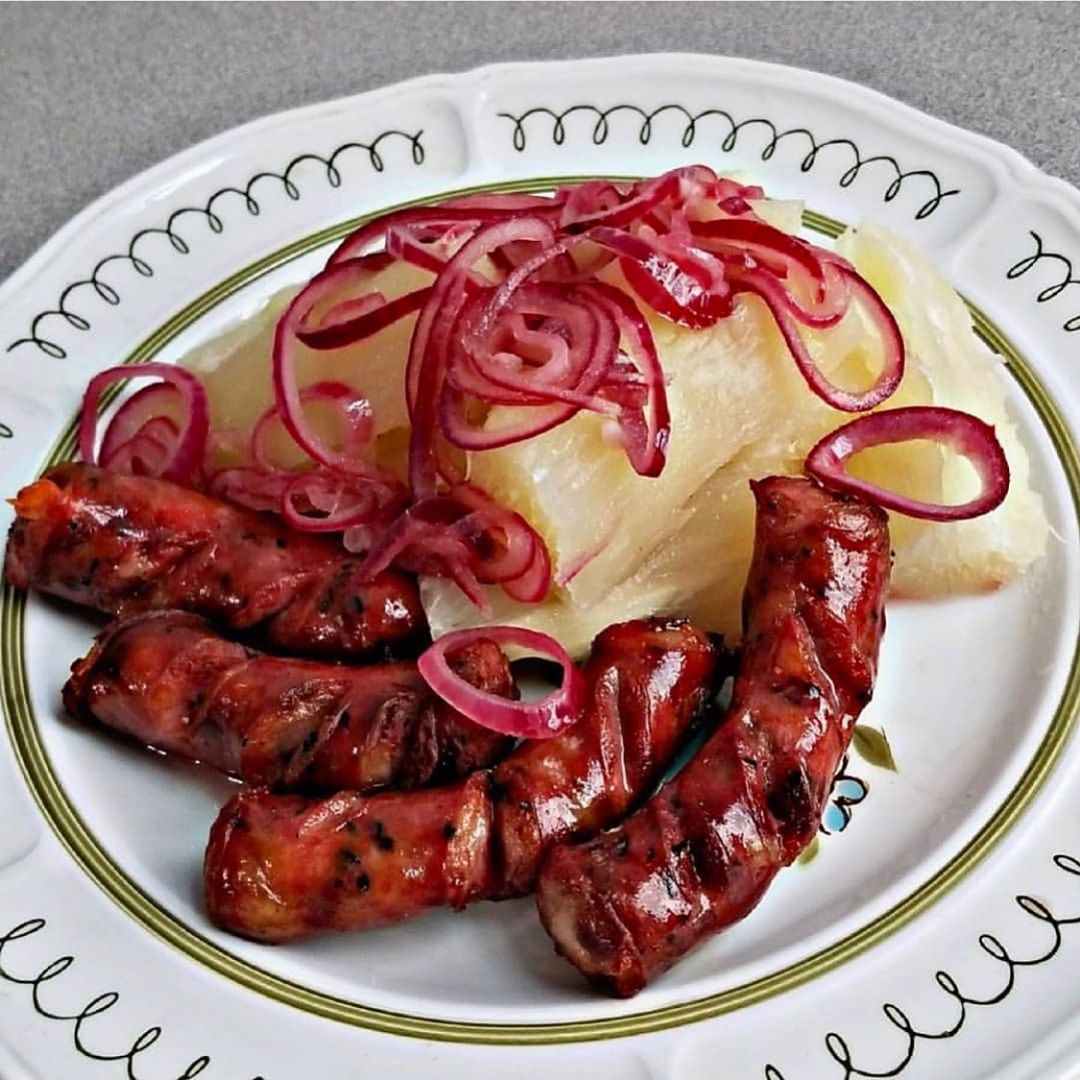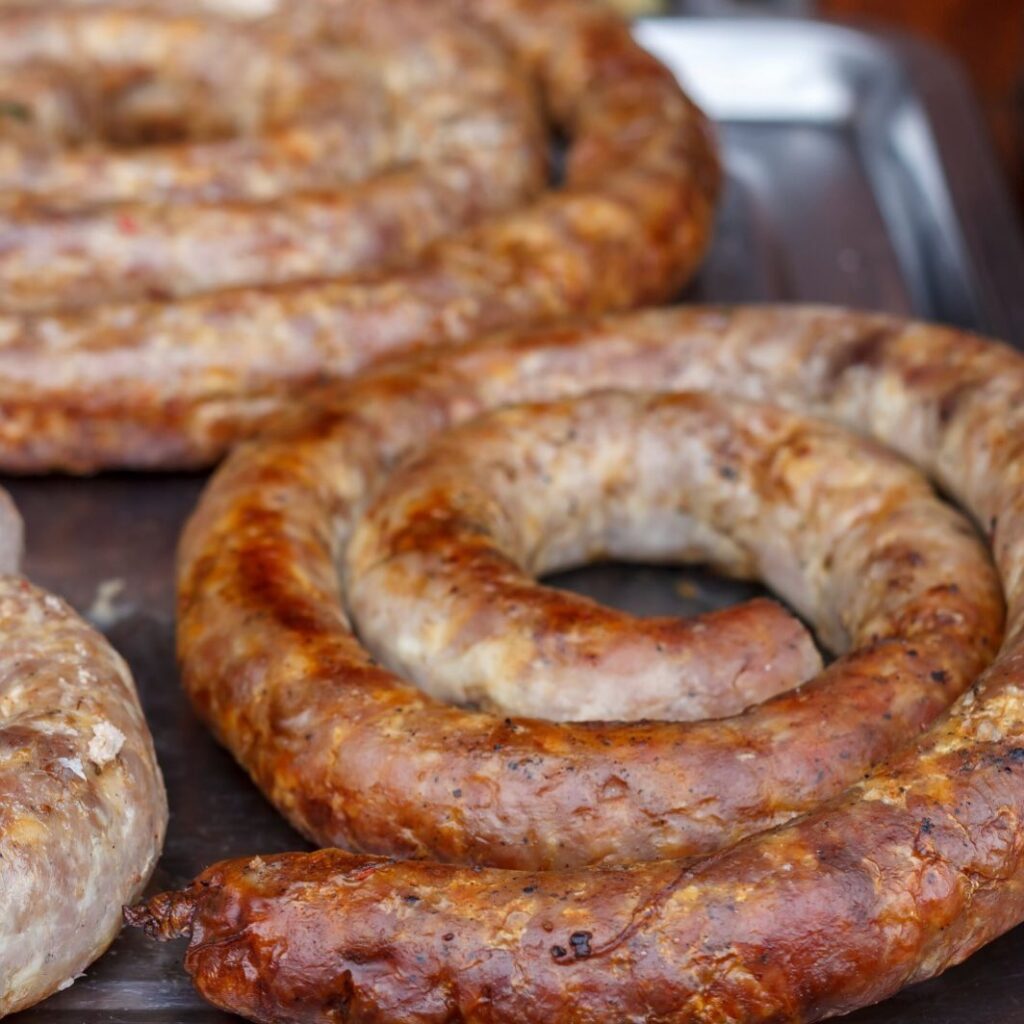Dominican Longaniza: The Ultimate Guide To This Iconic Spiced Pork Sausage
Step into any Dominican kitchen, and you're likely to encounter the tantalizing aroma of a culinary staple that embodies the vibrant spirit of the island: Dominican Longaniza. More than just a sausage, this beloved spiced pork delight is a cornerstone of Dominican gastronomy, deeply woven into the fabric of daily meals and festive celebrations alike. Its distinctive flavor profile and unique preparation set it apart, making it a must-try for anyone exploring the rich tapestry of Caribbean cuisine.
From bustling street food stalls to comforting home-cooked meals, Dominican Longaniza holds a special place, captivating palates with its robust spices and satisfying texture. This article will take you on a journey through its origins, uncover what makes the Dominican version so incredibly unique, explore its global appreciation, and provide practical insights into how you can enjoy this authentic delicacy, whether by finding quality products or even crafting your own at home. Get ready to dive deep into the world of longaniza and discover why it's so much more than just a sausage.
Table of Contents
- What Exactly is Longaniza? Unraveling the Sausage's Roots
- The Unique Character of Dominican Longaniza
- Longaniza vs. Chorizo: Understanding the Key Differences
- A Global Palate: Longaniza Across Different Cultures
- Sourcing Quality Dominican Longaniza: What to Look For
- Mastering the Art of Cooking Dominican Longaniza
- Crafting Your Own: Homemade Longaniza Recipes
- Addressing Common Concerns and Tips for Longaniza Lovers
What Exactly is Longaniza? Unraveling the Sausage's Roots
At its core, longaniza, or longganisa as it's known in some regions, refers to a diverse category of sausages primarily flavored with an array of aromatic spices. While the term might evoke images of a simple sausage, longaniza is essentially a type of Spanish sausage, traditionally made out of minced meat. Its origins trace back to Catalonia, Spain, where this beloved version of sausage was conceived with a distinctive long, thin form. Over centuries, as Spanish influence spread across the globe, longaniza became a staple across Latin America and beyond, with each region adding its own unique twist to the original concept.
A defining characteristic of longaniza, particularly distinguishing it from other sausages, is the preparation of its meat. Unlike many traditional sausages where the pork is ground, the pork used to make longaniza is typically chopped or minced, resulting in a coarser, more rustic texture that many aficionados cherish. Visually, longaniza often stands out due to its vibrant hue; they are commonly dyed red, yellow, or orange, often achieved naturally with achuete (annatto) seeds, which impart both color and a subtle flavor. This foundational understanding of longaniza sets the stage for appreciating what makes the Dominican rendition truly special.
The Unique Character of Dominican Longaniza
While longaniza enjoys widespread popularity across various cultures, what makes Dominican Longaniza so unique is its distinct flavor profile, which is deeply rooted in the island's culinary traditions. The Dominican version moves beyond the basic spiced pork sausage to incorporate a blend of local ingredients and preparation methods that give it an unmistakable taste. Unlike its Spanish ancestor or many of its Latin American cousins, Dominican longaniza is often characterized by a robust garlicky flavor, combined with a generous use of oregano, a touch of sour orange or lime juice, and a hint of vinegar, which not only tenderizes the meat but also adds a tangy zest.
The texture of Dominican Longaniza is another hallmark. Sticking to the minced meat tradition, it offers a hearty chew that contrasts with the finer grind of many other sausages. This coarser texture allows the individual flavors of the spices and herbs to shine through more distinctly. Often, it's not encased in traditional casings, leading to what's sometimes referred to as "caseless longaniza," making it incredibly versatile for cooking. This particular longaniza is more than just food; it's a cultural symbol, a taste of home, and an essential component of many traditional Dominican dishes, from breakfast to dinner.
Longaniza vs. Chorizo: Understanding the Key Differences
For many, the terms "longaniza" and "chorizo" are often used interchangeably, leading to confusion. However, while both are popular spiced pork sausages, they possess distinct differences in ingredients, look, taste, and how they are typically used. Understanding these nuances is key to appreciating the unique qualities of each, especially when it comes to the beloved Dominican Longaniza.
The main difference lies in the preparation of the meat and the primary spicing agent. Longaniza is traditionally made with minced meat, which gives it a coarser, more rustic texture. In contrast, chorizo is typically made with ground pork, resulting in a finer, more uniform consistency. This textural difference significantly impacts the mouthfeel and how the sausage cooks. Furthermore, their signature spices set them apart: chorizo is famously spiced with paprika, which imparts its characteristic smoky flavor and deep red color. Longaniza, on the other hand, is primarily spiced with black pepper, often complemented by garlic, oregano, and other regional herbs, leading to a brighter, more peppery, and sometimes tangier profile. While chorizo can also be made from ground pork, beef, or a combination, the minced pork is a defining feature of longaniza, particularly in its Dominican iteration.
A Global Palate: Longaniza Across Different Cultures
The journey of longaniza from its Spanish origins to becoming a global culinary phenomenon is a testament to its adaptability and universal appeal. As mentioned, longaniza is a type of sausage that originated in Catalonia, Spain, and has since become a staple across Latin America, with each region adding its own unique twist. This global appreciation highlights the versatility of the sausage and how local ingredients and culinary traditions can transform a basic concept into something distinctly regional.
For instance, Mexican longaniza often boasts a deep red color from chili peppers and a more intense, sometimes spicier, flavor profile. In the Philippines, 'longganisa' varies wildly from sweet and garlicky to sour and savory, reflecting the archipelago's diverse regional cuisines. Some versions are even called chorizo, choriso, tsoriso, or soriso in Visayan regions, further blurring the lines but always retaining the essence of a spiced sausage. These variations underscore the idea that while the name remains similar, the taste and texture can be dramatically different, making the exploration of longaniza a fascinating culinary adventure. The Dominican version, with its distinctive garlicky and herbaceous notes, stands proudly among these global interpretations, offering a taste that is unmistakably Caribbean.
Sourcing Quality Dominican Longaniza: What to Look For
To truly appreciate the rich flavors of Dominican Longaniza, sourcing a quality product is paramount. Whether you're in the Dominican Republic or looking for it in international markets, knowing what to look for can make all the difference in your culinary experience. Quality longaniza begins with quality pork. Look for sausages made from fresh, well-sourced pork, ideally from reputable butchers or producers known for their artisanal methods. The color should be vibrant, reflecting the use of natural dyes like achuete, and not appear dull or grayish.
When purchasing, pay attention to the aroma; it should have a fresh, savory, and distinctly garlicky scent, indicative of the traditional Dominican seasoning. Avoid any product with an off-putting or overly strong, artificial smell. If buying pre-packaged longaniza, check the ingredient list for unnecessary fillers or artificial preservatives. The best Dominican Longaniza will have a relatively short and understandable ingredient list: pork, garlic, oregano, black pepper, salt, vinegar, and achuete. Many local markets and specialty Latin American grocery stores are excellent places where you can find quality pork sausage to cook yourself, often made fresh by local vendors who adhere to traditional recipes.
Mastering the Art of Cooking Dominican Longaniza
Cooking Dominican Longaniza is an art form in itself, transforming the raw sausage into a crispy, flavorful delight. While seemingly straightforward, understanding the best techniques can elevate your dish from good to unforgettable. Longaniza is incredibly versatile and can be prepared in numerous ways, each bringing out different aspects of its rich flavor profile. Whether you're aiming for a quick meal or integrating it into a complex Dominican feast, knowing how to cook longaniza, the popular spiced pork sausage, is essential.
Traditional Frying Methods
The most common and arguably most beloved method for cooking longaniza is pan-frying. This technique yields a beautifully crispy exterior while keeping the interior juicy and flavorful. To achieve this, cut the longaniza into desired lengths (often 2-3 inch pieces). Heat a small amount of oil in a skillet over medium heat. Place the longaniza pieces in the hot oil, ensuring not to overcrowd the pan, which can steam rather than fry the sausage. Cook for about 10-15 minutes, turning frequently, until all sides are golden brown and crispy, and the internal temperature reaches a safe 160°F (71°C). The fat rendered from the longaniza itself will contribute to its delicious crispiness.
Incorporating Longaniza into Dominican Dishes
Dominican Longaniza shines brightest when integrated into traditional Dominican cuisine. It's a key ingredient in many beloved dishes, adding depth and a savory punch. For breakfast, it's often served alongside fried plantains (tostones or maduros) and fried eggs, a classic "Los Tres Golpes" (The Three Hits) breakfast. For lunch or dinner, longaniza can be diced and added to rice dishes like "Arroz con Longaniza," or simmered in stews such as "Sancocho," a hearty seven-meat stew where its robust flavor adds a unique dimension. It's also fantastic when crumbled and mixed into "Mofongo," a dish made from mashed fried plantains with garlic and pork cracklings. The versatility of longaniza allows it to be a star or a supporting player, always enhancing the overall flavor profile.
Creative Culinary Twists with Longaniza
Beyond traditional preparations, Dominican Longaniza lends itself well to modern and creative culinary applications. Consider using it as a pizza topping, adding a spicy, savory kick. Crumble it into pasta sauces for a unique twist on a classic Italian dish, or use it as a filling for empanadas or savory pastries. It can also be grilled or baked for a healthier alternative to frying, offering a different texture while retaining its core flavors. By staying updated on the latest trends in longaniza cooking and addressing common concerns, you can become a master of longaniza cuisine in no time. So, roll up your sleeves, grab some quality longaniza, and let your culinary creativity flow!
Crafting Your Own: Homemade Longaniza Recipes
For those who love to cook and appreciate fresh, preservative-free ingredients, making homemade longaniza can be a rewarding experience. It allows you to control the quality of your ingredients and tailor the spice level to your preference. While the process might seem daunting, especially for those accustomed to store-bought sausages, learning how to make homemade longaniza sausages is quite accessible, particularly if you opt for the caseless version. This approach also ensures no artificial preservatives are used, giving you a truly authentic and wholesome product.
Essential Ingredients and Spices
The heart of any good Dominican Longaniza recipe lies in its essential ingredients and the careful balance of spices. You'll need good quality pork, preferably a cut with a decent fat content (like pork shoulder or Boston butt), which ensures a juicy sausage. For the signature Dominican flavor, the key spices include:
- Garlic: Generous amounts, freshly minced.
- Black Pepper: The primary spice that defines longaniza's peppery kick.
- Dried Oregano: Adds an earthy, aromatic depth.
- Vinegar: White vinegar or apple cider vinegar, crucial for tenderizing and adding tang.
- Sour Orange Juice (or Lime/Lemon Juice): For an authentic citrusy zest.
- Salt: To taste, essential for seasoning and preservation.
- Achuete (Annatto): For natural color and a subtle, earthy flavor. This can be in oil form or seeds steeped in warm water.
Step-by-Step Guide to Caseless Longaniza
Making caseless longaniza is simpler than traditional sausage making as it eliminates the need for stuffing casings. Here's a basic guide:
- Prepare the Pork: Cut your pork into small, manageable cubes. For a truly authentic texture, you'll want to mince or finely chop the meat rather than grinding it. If using a meat grinder, use a coarse plate.
- Prepare the Seasoning Paste: In a food processor or mortar and pestle, combine minced garlic, dried oregano, black pepper, salt, and achuete (if using seeds, soak them in a little warm water or oil first to extract color and flavor). Add the vinegar and sour orange/lime juice to create a wet paste.
- Combine and Mix: In a large bowl, add the chopped pork. Pour the seasoning paste over the pork. Using your hands (wearing gloves is recommended), thoroughly mix the meat and seasonings until everything is evenly distributed. Knead it well for several minutes; this helps bind the meat and develop the flavor.
- Marinate: Cover the bowl and refrigerate for at least 4 hours, or ideally overnight. This allows the flavors to meld and deepen.
- Form and Cook: When ready to cook, take portions of the mixture and form them into patties, small logs, or simply crumble them directly into a hot skillet with a little oil. Cook over medium heat until thoroughly browned and cooked through, ensuring an internal temperature of 160°F (71°C).
This method allows you to enjoy the authentic taste of homemade Dominican Longaniza with no artificial preservatives, offering a fresh and flavorful alternative to store-bought options. This is a Mexican longaniza sausage recipe often starts with a similar principle, showcasing the versatility of homemade sausage making.
Addressing Common Concerns and Tips for Longaniza Lovers
For those new to cooking with or even just consuming Dominican Longaniza, a few common concerns often arise, primarily around food safety, storage, and achieving the best flavor and texture. Addressing these ensures a safe and enjoyable culinary experience.
- Food Safety: As with any meat product, proper handling is crucial. Always ensure longaniza is cooked to an internal temperature of 160°F (71°C) to eliminate harmful bacteria. Use a meat thermometer for accuracy. Avoid cross-contamination by keeping raw longaniza separate from other foods and washing hands, cutting boards, and utensils thoroughly after handling.
- Storage: Raw longaniza should be refrigerated and consumed within 1-2 days, or frozen for longer storage (up to 3 months). Cooked longaniza can be refrigerated for 3-4 days. Always store in airtight containers to maintain freshness and prevent odor transfer.
- Fat Content: Dominican Longaniza, like many traditional sausages, can be quite fatty. While this contributes to its flavor and juiciness, if you prefer less fat, you can drain some of the rendered fat during cooking. However, don't drain it all, as some fat is essential for that signature crispy texture.
- Seasoning Balance: When making homemade longaniza, always taste a small cooked portion before cooking the entire batch to adjust salt and spice levels. This ensures your homemade longaniza is perfectly seasoned to your liking.
- Achieving Crispy Texture: For that desirable crispy exterior, don't overcrowd the pan when frying. Cook in batches if necessary, allowing enough space for the longaniza to brown evenly rather than steam.
By keeping these tips in mind, you can confidently enjoy and even master the preparation of Dominican Longaniza, ensuring every bite is as delicious and safe as it should be. These practical insights help address common concerns, making your journey into longaniza cuisine a smooth and satisfying one.
Conclusion
From its Spanish roots to its vibrant presence in Caribbean kitchens, Dominican Longaniza stands as a testament to culinary evolution and cultural identity. We've journeyed through its unique characteristics, understanding how its minced pork, distinct spices, and traditional preparation set it apart from other sausages, including its close cousin, chorizo. We've explored its global reach, appreciating how various cultures have embraced and adapted this versatile spiced pork sausage, always adding their own local flair.
Whether you're sourcing quality longaniza from a trusted vendor or embarking on the rewarding adventure of making your own caseless version at home, the rich flavors and satisfying texture of this Dominican staple are sure to delight. It's more than just an ingredient; it's an experience, a taste of the Dominican Republic's warm hospitality and vibrant culinary heritage. So, we encourage you to try cooking with Dominican Longaniza yourself. Share your favorite recipes or cooking experiences in the comments below, or explore other fascinating aspects of Dominican cuisine on our site. Your next culinary adventure awaits!

Longaniza Dominicana ¡Orgullo Gastronómica Dominicano!

Longaniza Dominicana ¡Orgullo Gastronómica Dominicano!

Longaniza Dominicana ¡Orgullo Gastronómica Dominicano!